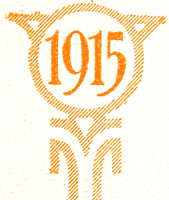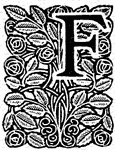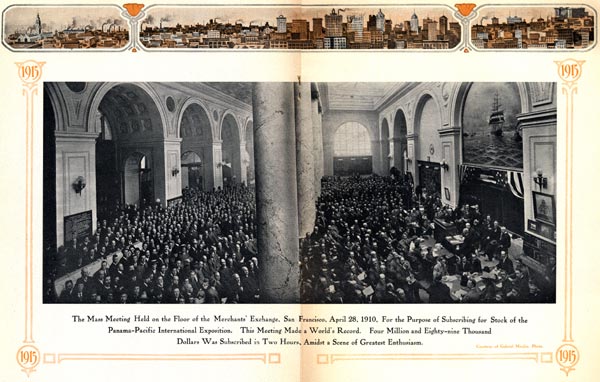| Home -> Other California History Books -> San Francisco and the Panama-Pacific Universal Exposition - Text | |||
 |
|||
 |
|||
 |
 |
||
|
San Francisco and the Panama-Pacific International Exposition
By James Henry MacLafferty Reprinted by courtesy of the Pacific Monthly |
|||
 For centuries it has been the custom among civilized nations to mark progress in their development and to celebrate great anniversaries by the holding of fairs. For centuries it has been the custom among civilized nations to mark progress in their development and to celebrate great anniversaries by the holding of fairs.Perhaps, if the facts were known, the line of succession could be readily traced from the days when man first became gregarious in his habits, down to the present intensity of purpose animating the citizens of San Francisco, of California, and to a greater or less degree, of what may well be designated as the United Pacific States. During the latter half of the century so recently rolled into oblivion, the exposition habit became decidedly prevalent. Passing over those of Europe, and other parts of the world, we may cite the more prominent, held within our own country, naming the celebration at Philadelphia of the Centennial of the birth of our Nation; the Columbian Exposition at Chicago, commemorating the four-hundredth anniversary of the discovery of America, and the Louisiana Purchase Exposition, at St. Louis. To the residents of the Pacific States, the Lewis and Clark Exposition at Portland, and the Alaska-Yukon-Pacific Exposition at Seattle were fraught with scarcely less significance, and will always be remembered as milestones marking great achievement in the progress of the still virgin Pacific Northwest. New Orleans, Buffalo, Jamestown and other cities have, during these years, thrown open their gates, each with some particular reason to distinguish its effort. And so, citing the few named here, the desirability of holding an exposition to celebrate a great event needs no defense. Looking ahead five years we contemplate the completion of the world's greatest feat in engineering: the Panama Canal. It is not exaggeration to say that it is the greatest undertaking ever seriously conceived in the mind of man, not omitting the Chinese Wall. It is truly great for at least two reasons: its grandeur, from an engineering standpoint, and because from the moment, Two mighty seas have kept their tryst And the East and West have met and kissed, the map of the whole world will have changed. With this change will follow, although perhaps not at once apparent, a sure change in the destinies of states and nations. No section of the United States has had from the first a keener appreciation of the importance of this undertaking than have the dwellers in the States bordering the Pacific. Though, undoubtedly, the real motive of the Government in the expenditure of approximately $500,000,000 is for purposes of defense, the people of the Pacific Coast have considered that feature secondary. To most them the completion of the Panama Canal means a hastening in the development of a mighty empire. They feel that it means release from exorbitant exactions by trans-continental railroads, and the peopling of hundreds of thousands of acres of idle land. And it is a fact that this belief is focussed in San Francisco, the great port of the Pacific, and destined in the minds of her citizens to be some day the greatest port of the whole world. If we but liken the Panama Canal to a vast arch, uniting Western Europe with Eastern Asia, may we not easily see in San Francisco the keystone of that arch? Is it not true, also, that this enterprise makes chiefly for the development of the Pacific, rather than the Atlantic? It is fitting therefore, that the celebration of this mighty achievement should be held in the one city of the Pacific fitted, by geographical location, by temperament and by appropriateness of its leading position, to carry it to a successful conclusion. San Francisco has not sought to avoid the duty laid at its door by the logic of events. Long before the idea of a celebration had been elsewhere seriously considered, it had taken deep root in the minds of her citizens, and in January, 1904, was first publicly advocated in a letter from one of her leading citizens, who today is in the front rank of the enterprise, which letter was at that time given to the press. Between the date of that letter and January, 1906, the project was quietly but persistently discussed by the leaders in public affairs in San Francisco. It was also about that date that San Francisco notified the world of its intention, by incorporating the Pacific Ocean Exposition Company, and scattering the knowledge of its designs broadcast. January 6, 1906, Representative Kahn, from California, presented a bill before the House, asking an appropriation of $5,000,000 from the Government for an exposition to be held in San Francisco, thus, again giving notice to the world of San Francisco's intention. Then, three months later, came the greatest municipal disaster in history; 3,000 acres, or about 4.7 square miles, containing 520 blocks and about 25,000 buildings, were destroyed by fire. It will never be known what money loss San Francisco suffered in this holocaust, but it is perhaps conservative to say, not less than $500,000,000. This terrific loss but gave added proof of San Francisco's indomitable pluck, that should not only challenge the admiration of the world, but should everywhere enlist friendly interest in its enterprise. It would be natural to suppose that a city thus stricken should be concerned with its own rehabilitation to a degree that would cause it to forget everything else. But what are the facts? A bill was passed in the California Assembly in 1907, one year later, appropriating money for the purpose of holding an exposition in San Francisco. Though it be true that it was, being considered immature, given a pocket veto, it demonstrates that there was a definite purpose to carry out the original plan. And so, from 1904 to the fall of 1909, the project was kept alive. In October, 1909, the signal success of the Portola celebration in San Francisco commemorating the discovery of San Francisco Bay, gave new impetus to the idea of the Panama-Pacific Exposition. At a dinner, given at the Bohemian Club, definite plans were laid, and as a part of these, Representative Kahn promised to introduce another measure, which was presented in Congress December 6, 1909, and was the first bill introduced at the session just adjourned. Many meetings followed between that date and March 28, 1910, on which date there was incorporated the Panama-Pacific International Exposition Company. Long before this, the movement had gained great impetus among the citizens of the city and State, and the originators, their ears discreetly to the ground, knew the arrival of the psychologic moment, and called a mass-meeting for April 28, 1910, at the Merchants Exchange, for the purpose of receiving subscriptions to the capital stock of the Panama-Pacific International Exposition Company. It was announced that the books would remain open for two hours only, and that the amount desired was $5,000,000. Some things are hard to describe, and that record-breaking meeting is one of them. Approximately 4,000 were present. Whatever the number, it was "capacity:' Far out into the corridors the eager crowd extended. The rich and the near-rich; the professional man and the small merchant were there, prepared to respond. "Larry" Harris, the man who immortalized himself by writing the verses, "The Damn'dest Finest Ruins:" was called to the platform to receive subscriptions from the audience. Never in history did auctioneer do bigger business in less time. Subscriptions began to pour in within five minutes of the opening of the meeting. So eager were the subscribers that a dozen would shout at once. The amounts ranged from $250,000 clear down to a comparatively humble $500. From forty to fifty were of $25,000 each. Harris cautioned, in vain at times, against the cheering when the larger amounts were shouted to the platform. "Refrain from applause, please, he urged, "we have but two hours, and each second is worth $700. When anybody cheers it will cost about $8,500 in round figures." And how the money did come! Again quoting Harris, "It bid fair to make the San Francisco Mint look like a penny arcade." The bids came so rapidly that they had to be taken in short hand. The figures on the blackboard mounted up, and up, until, at the end of the two hours nearly $4,000,000 had been subscribed, and then the meeting adjourned. One might easily suppose that this sustained effort had drained the crowd. Far from it. Men seemed reluctant to leave the room, and hundreds, gathering around the platform, opened a "curb market" lasting for from twenty minutes to half an hour. It was during that time when the subscriptions mounted to $4,089,000 and the greatest money-raising event of its kind in history rested for the night. But this was only the beginning of San Francisco's movement to finance the project; $7,500,000 has now been raised without going outside San Francisco. It is planned also to bond the city for $5,000,000; and it is the expectation that the State will contribute several millions. Since Mr. Kahn introduced his bill in 1906, asking $5,000,000 from the National Government, plans have changed, and San Francisco will ask nothing from the Government but official recognition; and who shall say that the city has not earned it? With full knowledge of the foregoing facts New Orleans has attempted to forestall the city by the Golden Gate, and to steal away from San Francisco what is hers by priority of claim, by right of geographical location, and by the logic of the sure trend of future events. It is no part of my purpose to attack the Crescent City, but a careful study of the whole situation must convince the unprejudiced mind that New Orleans, in thus projecting herself into the situation at this time, is guilty of something like cold-blooded selfishness rendered more offensive by impertinence. Many reasons could be given why New Orleans is not the place to hold an exposition, but one is enough to offer here. People attend expositions, as a rule, for pleasure, and who that knows New Orleans would choose to spend a summer there? Nevertheless, the southern city has been able to delay official recognition to San Francisco at the session of Congress just ended, in spite of the fact that in May last, Governor Gillett, of California, accompanied by a committee of influential and representative men from all parts 0f the State, went to Washington, by special train, and urged San Francisco's claim for recognition in a most vigorous manner. But New Orleans cannot defeat the ultimate purpose. The American people are lovers of fair play. Keeping the contest open for another six months will but serve as a campaign of education, and will the more conclusively demonstrate to the world the fitness of holding the celebration on the shores of the Pacific, to which region the Panama Canal means more than to all the rest of the world. The American Nation should not be unmindful of the necessity of peopling and developing the West as rapidly as possible, so that it may stand as a bulwark against the encroachments of ambitious neighbors further west. All citizens west of the Rocky Mountains, especially, should get behind this project as one man, realizing the vastness of its importance to the waiting West. It is the belief of the writer, based on knowledge gained in fifty-six trips across the continent, that throughout the East is a keen interest in the West and its development, and that the holding of this exposition in San Francisco will be hailed with satisfaction over the greater part of the United States. In this wonderful harbor with over an hundred square miles of roadstead, the combined navies of the world could ride at anchor. Here, also, the Asiatic nations can most conveniently come to display their attractions. Nothing like the naval display easily possible in San Francisco can be shown in New Orleans. It is sufficient to say that San Francisco pledges itself to give to the world the greatest of all expositions. San Francisco can show, even today, one of the world's greatest wonders in achievement, a brand-new city with practically every business building less than four years old, built, to again quote "Larry" Harris, on The damn'dest finest ruins ever gazed on anywhere. Since the above article appeared in the Pacific Monthly, the Legislature of California in extraordinary session convened, has authorized the levying of a tax of $5,000,000 on the State of California, and also the bonding of the City of San Francisco for $5,000,000, thus making a grand total of $17,500,000, available for the Panama-Pacific International Exposition. Designed and Printed by Bolte & Braden Company - San Francisco, California |
|||
 |
|||
 |
|||
 |
|||
| The Mass Meeting Held on the Floor of the Merchant's Exchange, San francisco, April 28, 1910, For the Purpose of Subscribing for Stock of the Panama-Pacific International Exposition. This meeting made a World's Record. Four Million and Eighty-Nine Thousand Dollars was Subscribed in Two Hours, Amidst a scene of Greatest Enthusiasm. | |||
 |
|||
 |
|||
 |
|||
|
|
|||